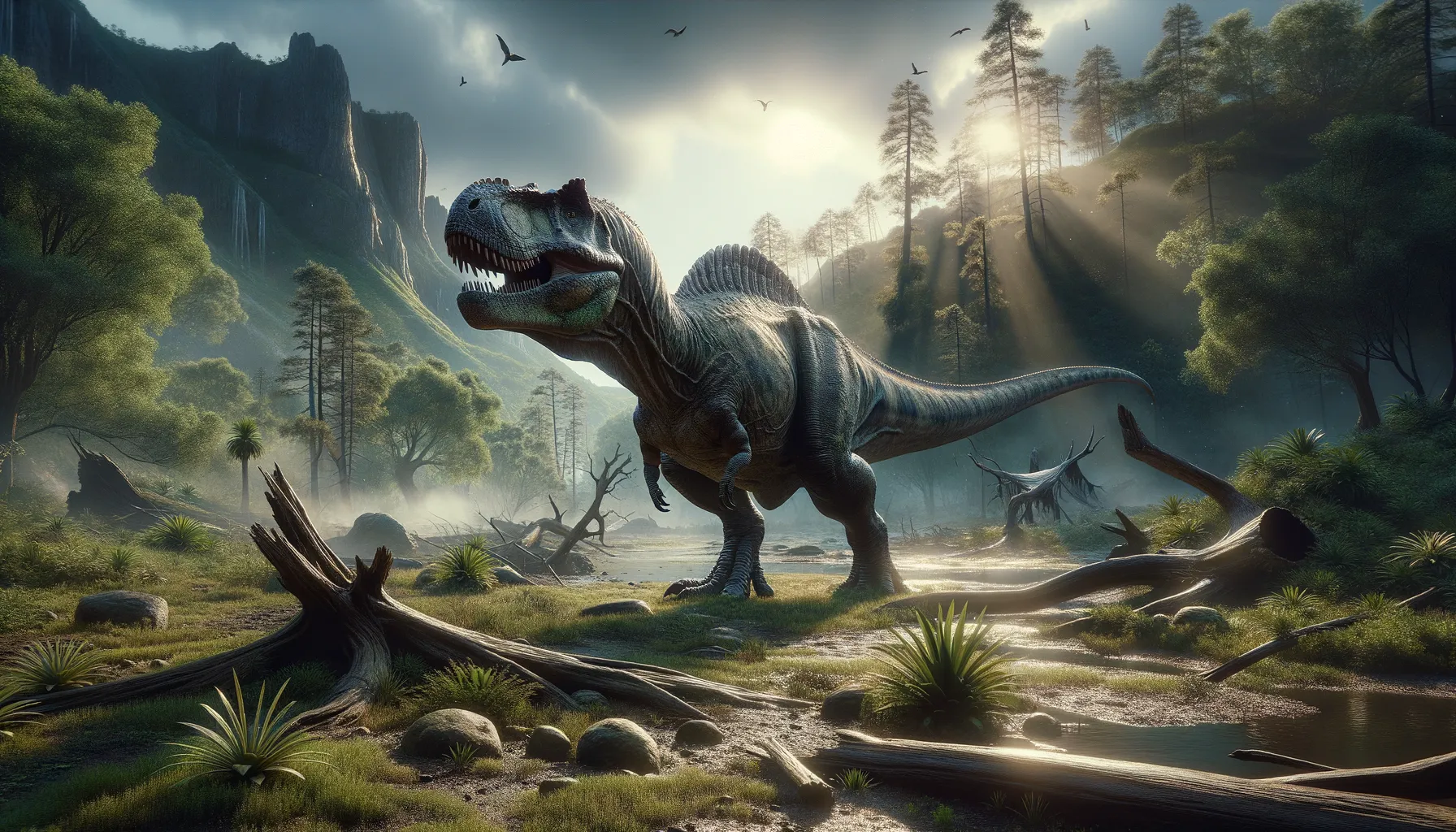
Regnosaurus
A gentle giant from the Cretaceous era.
Period
Cretaceous
Length
Around 4 meters long.
Height
Approximately 1.5 meters tall.
Weight
Estimated around 1,000 kg.
Regnosaurus was a mid-sized herbivorous dinosaur with a slow pace and heavy build. It roamed during the early Cretaceous period, around 140 million years ago. Discovered in the United Kingdom, this dinosaur had a robust body structure suitable for a life spent grazing on low-lying vegetation. Its fossil record is sparse, with few remains having been found, providing limited information compared to other dinosaurs.
Diet
Regnosaurus was a herbivore, primarily feeding on plants. Its diet likely consisted of ferns, cycads, and other low-lying vegetation that flourished during the Cretaceous period.
Hunting
As a plant-eater, Regnosaurus did not engage in hunting behavior. It would have spent much of its time feeding on available vegetation and moving through its habitat to find plentiful food sources.
Environmental challenges
Regnosaurus faced environmental challenges such as changes in vegetation and climate fluctuations. It needed to adapt to different plant availabilities as seasons changed, requiring movement to new areas in search of food. Being large and slow, it had to be vigilant about potential predators in its environment.
Speed
Likely slow, with a lumbering pace.
Lifespan
Estimated to be several decades.
First discovery
Described by Gideon Mantell in 1848.
Fun Facts
- Regnosaurus was a herbivorous dinosaur that lived during the Early Cretaceous period.
- It got its name 'Regnosaurus' which means 'Rhaedene lizard' from the region where its fossils were first discovered in southern England.
- Only a few pieces of Regnosaurus fossils have been found, making it a rare and mysterious dinosaur.
- Regnosaurus is believed to belong to the Ankylosauria group, known for their armored bodies.
- Despite having only limited fossil evidence, Regnosaurus has sparked interest due to its unique features and historical mystery.
- Regnosaurus helps paleontologists understand the diversity of dinosaur species that existed during the Early Cretaceous period.
- The fossils of Regnosaurus were first described in 1848 by the renowned paleontologist Gideon Mantell.
Growth and Development
Young Regnosaurus would have been more vulnerable to predation and environmental challenges. As they grew, they became more robust and capable of defending themselves through sheer size. Their development also included growing strong limbs to support their body weight.
Habitat
Regnosaurus lived in what is now the United Kingdom, in habitats rich with vegetation. Its environment consisted of forests and open plains that provided ample food. Climate and vegetation changes would have influenced its habitat tremendously over time.
Interaction with other species
Regnosaurus likely interacted with other herbivorous dinosaurs while grazing and may have faced competition for resources. Its interactions with predators would have been limited due to its size, as it would fend off smaller threats. However, larger carnivores could have posed a significant threat.
Natural lifespan
Regnosaurus likely lived for around 20 to 30 years in the wild.
Reproduction
Regnosaurus reproduced by laying eggs, as is common in most dinosaurs. The nesting behavior and care for the young remain unknown due to limited fossil evidence. The eggs were likely laid in nests covered with vegetation to protect them.
Social behaviour
There is little evidence regarding the social behavior of Regnosaurus. However, similar dinosaurs often lived in herds or groups to protect themselves from predators, suggesting they may have had some social interactions.
Fossil locations
Fossils of Regnosaurus have been found in Southeast England, primarily Sussex. The remains discovered are fragmentary, offering limited insights into the complete structure of the dinosaur. Further discoveries in potential nearby regions could provide additional information.
